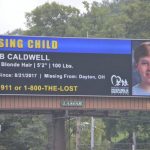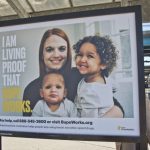It’s no secret that billboards are now being used for more than just advertising. Municipal authorities are seeing the benefits and reach of Out of Home Advertising (OOH) and using billboards to get messages of safety out as well. In times of bad weather, billboards have been used in many areas to alert drivers of impending danger and direct them what to do. The FBI has used billboards to show the faces of criminals on their Most Wanted List. Police are also using billboards to find missing persons.

One of the most recent examples of this effort was in Sugarcreek Township, Ohio. Just last August, the image of Jacob Caldwell, a teenager missing for more than a year, was posted on digital billboards. After the billboard was posted, police received a tip that enabled them to obtain search warrants and locate the boy. The tip is said to have come from someone who saw the billboard and was prompted to call. The police chief said the billboards were a complement to the other efforts to get the word out on social media.

The larger than life format of billboards has also been hailed as a compelling medium to alert people to the species that are facing extinction. Earth Day was started back in 1970, and advertising for it has grown exponentially in recent years. Founder Denis Hayes says, “Now more than ever, Earth Day requires a big platform, commanding our attention in a mobile, busy world.” He goes on to say, “Always alert to the ways that people receive information, I noticed when the compelling images of Joel Sartore’s Photo Ark began appearing in 2017. His photographs of animals on the edge of extinction were especially compelling when they looked down at me from large format billboards.”

But it’s not just the fight to protect our endangered animals, billboards are also being used to protect our species. Health Departments around the nation are using out of home media to fight the drug epidemic. Opioid use has skyrocketed in recent years and in an effort to show people that help is out there, billboards have been put up in many cities, like Philadelphia. The city saw more than 1200 drug related deaths in 2017 alone. Although that number was down slightly last year, the city launched a campaign using both billboards and transit advertising to promote medication as a treatment for addiction. Health Commissioner Thomas Farley said the goal of the campaign is to reach the “hidden population” of addicts…which includes the homeless. Many people also don’t know that it’s not just people in a bad life situation like the homeless that are users. Philadelphia’s campaign includes testimonials from a man that became addicted to pain killers after a routine dental procedure.
This article was rewritten from Pat O’Donnell’s article published on the OAAA website.
